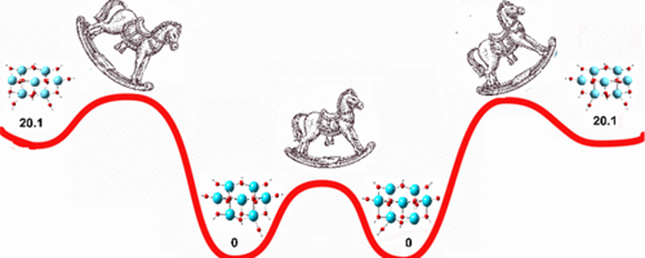
The migration of functional groups on surfaces of clusters or materials can significantly affect corresponding reaction sites, behaving as a double-edged sword in the field of catalysis. An in-depth understanding of relative migration mechanisms is essential for the design of efficient catalytic sites. Hydroxyl (OH) groups are widely present on various surfaces related to heterogeneous catalysts. As catalytic active sites or intermediates, hydroxyl is considered a key factor affecting many reactions. The chemical environment, stability, redox behavior, and position of hydroxyl groups have received special attention in the preparation or catalytic process of catalysts. And the migration of OH on the surface of the catalyst is inevitable and may have a significant impact on the corresponding chemical reactions.
Recently, Xianglei Kong’s group have generated a series of new magic-numbered cluster ions of lanthanum oxide hydrates using the method of laser ablation and studied their structures and related properties by combining mass spectrometry, IRPD spectroscopy, and theoretical calculations. Through in-depth study of these cluster ions, not only have the most stable structures of these clusters been revealed, but also a new mechanism for OH migration has been revealed. While the most stable isomers of the (1,4) and (2,5) clusters show nearly planar structures with Cs and C4v symmetry, respectively, that of (3,7) has changed to be stacking structures. Based on the structures, the mechanism by which the vibrational rocking of OH groups in corresponding transition states results in the migration of OH groups on the surfaces of the clusters has been disclosed. And the lowest energy barrier for such a migration can be less than 12 kcal/mol without the aid of hydrogen bonds. This work shows how the vibration rocking of OH groups can induce the migration of surface OH groups with a relatively low energy barrier at the molecular level, which may affect the diffusion and anchoring of OH groups and the catalytic performance of the surface of the relative materials. Relevant achievements were published in J. Am. Chem. Soc., 2025. DOI: 10.1021/jacs.5c09002.